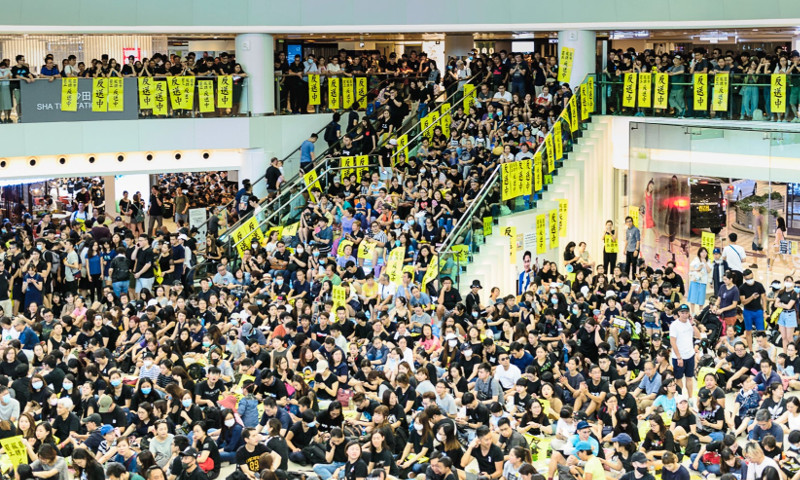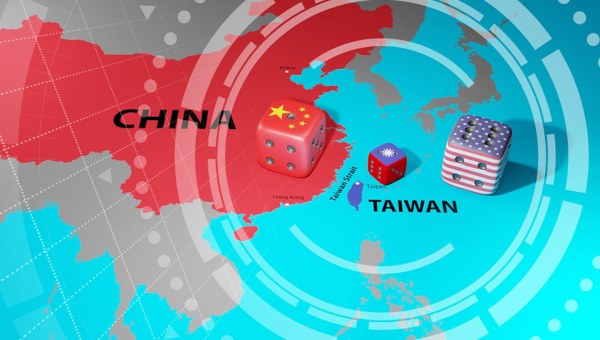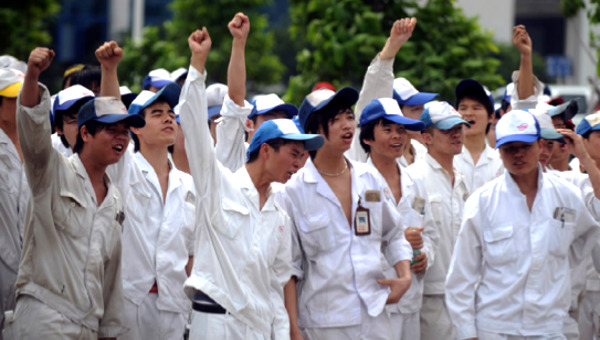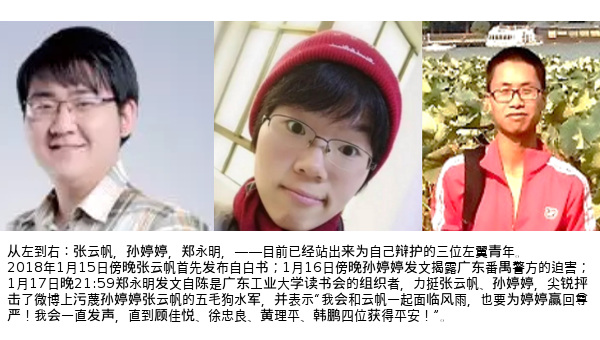Mass Mobilization Shakes Hong Kong
Hong Kong is in the middle of its biggest strike since 1967. Businesses have shut down. Some bus drivers have been on strike. Tube lines have stopped running during the morning rush hour. Hundreds of flights have been cancelled. Thousands of mostly young demonstrators have occupied roads and shopping malls across the city. At 6pm six police stations were under siege, with demonstrators attempting to set one of them on fire, and police had fired teargas in attempts to disperse demonstrators occupying five major roads in different parts of the city.
 The strike comes after three days of confrontations between young people and the police and it caps nine weeks of a popular insurgency. Week after week there have been mass demonstrations. The largest demonstration involved an estimated two million people, or more than one in four of the population. Others have been smaller but even so have seen hundreds of thousands take to the streets. Increasingly, demonstrations have turned into long and bitter battles with the police, who have employed ever more brutal methods to try to break up the protesters – tear gas, rubber bullets, baton charges, and indiscriminate beatings.
The strike comes after three days of confrontations between young people and the police and it caps nine weeks of a popular insurgency. Week after week there have been mass demonstrations. The largest demonstration involved an estimated two million people, or more than one in four of the population. Others have been smaller but even so have seen hundreds of thousands take to the streets. Increasingly, demonstrations have turned into long and bitter battles with the police, who have employed ever more brutal methods to try to break up the protesters – tear gas, rubber bullets, baton charges, and indiscriminate beatings.
For their part, the demonstrators have displayed remarkable unity and great courage. When the most militant demonstrators fought back against the police, surrounded police stations, occupied the local “parliament” building, and besieged the Hong Kong offices of the Beijing government, the authorities tried the familiar tactic of denouncing “violence” in an effort to isolate them from the masses. Despite continued propaganda about law and order, this effort has spectacularly failed. Support for the demonstrators remains strong even though they sometimes inconvenience others. One construction worker stuck in a traffic jam on the way home on the strike day told reporters that “You see here, no one is honking their horn. Everybody is fine with this wildcat protest as we all oppose the extradition bill and this rotten government.” In other cases, local residents affected by the indiscriminate use of tear-gas have joined demonstrators in attacking the police.
Front-line Fighters and Supporters
Many people who are not able or willing to stand in the front line against police charges have played a vital supportive role. Individuals and organized groups have provided food, water, gas masks, helmets, medical assistance and other necessities to the brave young people who have fought the police. Some of these items might strike the outsider as odd, but are essential to the continuation of the movement. On demonstration nights, you can find outside local underground (MTR) stations piles of multi-coloured t-shirts, piles of travel tickets and loose change. The shirts are because demonstrators favour wearing black and then changing into other colours on leaving a demonstration to decrease the risk from the police or pro-Beijing thugs. The tickets and the money are freely available so that demonstrators do not have to use their travel cards and leave electronic record of their movements.
The front-line fighters and their supporters provide an unparalleled example of self-organization. Although official democratic politicians support the movement, the organization both of the vanguard of the demonstrators and their network of voluntary supporters is entirely spontaneous. The big demonstration on 27 July in Yuen Long, organized to protest against police collaboration with gangsters attacking MTR passengers, was called by a local resident, not a political leader. It was banned by the police, but hundreds of thousands still turned up defiantly and marched through the town. The call for the strike emerged from the movement and was then taken up by a number of unions.
The depth of the movement is dramatically illustrated by the occupations of those who have been arrested and charged. The movement certainly contains many students but among the men and women arrested in recent demonstrations were office workers, a cook, a nurse, an electrician, a construction worker, unemployed workers and an airline pilot. To paraphrase the American socialist writer Jonathan Neale: you know it’s a mass movement when an airline pilot is fighting the cops.
The Roots of the Movement
Since its hand-over by the British in 1997, Hong Kong has been a “Special Administrative Region” (SAR) of the People’s Republic of China (PRC). It has its own mini-constitution, the Basic Law, which spells out the framework of “One Country. Two Systems.” The Basic Law provides for freedom of speech and assembly, the continuation of the existing legal system, the non-applicability of mainland laws in Hong Kong, and the election of some representatives to the legislature. Hong Kong is not a democracy: its Chief Executive is appointed by Beijing on the advice of a tiny group of prominent individuals. Only some of the members of its Legislative Council are subject to democratic election, and the rest are the stooges of various interest groups like property companies and accountancy firms. The city has a yawning gap between the poor and the rich, who are overwhelmingly in the pockets of Beijing. Bentleys and Lamborghinis roam the streets while elderly women push carts around late at night to collect cardboard to sell in order to buy food. Hong Kong is like Renaissance Florence: it is a shockingly unequal city ruled by a wealthy and corrupt oligarchy who preside over a discontented populace while taking orders from somewhere else. The only thing missing is the Renaissance.
Economically, this has meant that housing is expensive and hard to obtain, since the land policy is designed to help landowners, construction companies, and rich golfers. Many people live in one room in sub-divided apartments and former industrial buildings or, at best, try to raise families in tiny flats. There are no meaningful pensions. Well-paid jobs are hard for working-class kids, and even university graduates, to find in what is a model post-industrial city. All of this leads to seething social discontent. Sometimes it takes the form of attacks on mainlanders, who are accused of causing shortages of basic necessities by purchasing huge quantities to take back home. Official attempts to stop this are ineffectual. Most airports around the world have signs saying that you must not carry drugs or weapons. Hong Kong’s airport has signs saying that you cannot take more than two cans of baby food out of the SAR. But while this social discontent sometimes takes reactionary forms, it is also the fuel on which the mass movement can feed.
More important, however, are issues of political identity. In a survey taken in June 2019, only 11 per cent identified as being “Chinese,” while 53 per cent say they are “Hong Kongers.” The remaining 36 per cent identified as some mixture of the two terms. Amongst young people, the proportion seeing themselves as different from the rest of the PRC is even higher. Hong Kongers mostly speak Cantonese. Since 1997, there has been increasing pressure to teach and use Mandarin, the national language of the PRC. Learning Mandarin is, of course, a sensible way of facing the future, but local languages are being squeezed hard on the mainland and Hong Kongers fear that sooner or later they will lose their mother tongue. The ban on the use of mainland law enforcement has also been under threat: mainland police and immigration officials are now stationed on Hong Kong soil in the newly-opened, and ridiculously expensive, express rail terminal on the Kowloon waterfront. They administer the laws of the PRC in defiance of the Hong Kong Basic Law. Many Hong Kongers are people who escaped from the mainland during the Cultural Revolution, or the children of people who fled, so they have a pretty clear idea of what policing is like in the mainland. The 2014 Umbrella Movement’s attempt to establish greater democracy was defeated and its leaders have been persecuted in the courts. Booksellers who sold material critical of the Communist Party were kidnapped in Hong Kong and re-appeared in jail on the mainland. Democratically elected members of the Legislative Council have been banned from office for trivial reasons, and some candidates for election have been refused permission to stand. The law is perceived to be increasingly used as a weapon to crush dissent, with long prison sentences handed out on spurious grounds. As Hong Kongers would put it, their way of life is under threat from creeping “mainlandization,” aided and abetted by the local government.
It was this sense that mainland laws were taking over Hong Kong that provoked the initial protests. The Chief Executive, Carrie Lam, introduced a Bill to establish the possibility of extradition to mainland China. People feared that this could be used to ship individuals who had committed no crime under Hong Kong law to the mainland, where they could be tried and sentenced for such shocking crimes as “causing trouble and picking fights” (yes, oppositionists are regularly jailed for just that). This legal move was seen as just one more step in the erosion of even the limited freedoms that Hong Kongers still enjoy.
These material and political factors have come together in the minds of millions of Hong Kongers as a threat to their entire future. That is why they are so determined and courageous and why the concessions like the suspension of the Extradition Bill have not been enough to stop the movement. The issues at stake are now far broader than that and involve the entire future of Hong Kong.
The Movement Now
The movement has been driven on by the depth of feeling amongst the masses and by the stupidity of the government and the police. One particular outrageous incident was an attack by white-shirted thugs armed with batons on the passengers in the MTR at Yuen Long station. This incident, which provoked mass demonstrations in response, was recorded on video in great detail. The thugs attacked passengers on the train and the platform, particularly targeting anyone wearing black but beating everyone indiscriminately, including a pregnant woman, an elected politician, and several journalists. The police took 50 minutes to respond to emergency calls and arrived after the attackers had left. They promptly went away again, leaving the station open to a second attack by the same gang. Police were later filmed hob-nobbing with some of the thugs.
It is the aftermath of the Yuen Long attack that has set the tone for the current phase of the movement. The collusion of police and gangsters, their increasingly brutal attacks on demonstrators, and the refusal of the government to make any further concessions, have raised the stakes considerably.
Since then we have seen the start of a new campaign of action. One sign of the new move was an entirely peaceful occupation of the Arrivals Hall in Hong Kong airport, designed to raise this issue with visitors and increase international knowledge of the situation. Crucially, this action was supported by many airport workers and endorsed by the Cathay Pacific Flight Attendants Union, one of the best organized and most independent-minded unions in Hong Kong. Similarly, some MTR staff planned a walk-out in protest at the way that a female driver had been blamed for the situation in Yuen Long. This action did not take place, their union exemplifying how many working class organizations in Hong Kong are directly controlled by Beijing stooges. More positively, thousands of civil servants risked their jobs in defiance of direct threats from the government in order to hold protest demonstrations. At the same time, thousands of medical workers protested at police interference with their work. Over the weekend, protesters held illegal marches on both Saturday and Sunday, besieged police stations, and fought running battles with the riot police.
The strike call was supported by a number of unions, including those of school teachers, social workers and airline flight attendants. Many individual businesses closed on the day. We have to be honest, however, and admit that the strike was far from bringing the SAR to a standstill. There is no protection under Hong Kong law for political strikes and many groups of workers have no experience of taking industrial action of any form. Many of the people who did not work on Monday took a day’s leave or reported sick in order to avoid victimization.
One of the main obstacles to the development of strike action is that the Hong Kong trade union movement is bitterly divided. The largest group, the Federation of Trade Unions, is entirely in the hands of Beijing, does nothing for its members, and represents the worst kind of yellow union. When, a few years ago, some dockers from the rival Confederation of Trade Unions went on strike for better pay and conditions, the Federation instructed its members to scab. Federation officials were successful in sabotaging the MTR strike, and they actively worked to defuse the Monday action. The Confederation, some of whose unions actively supported the strike, is much smaller and less powerful but does represent genuinely independent trade unions that attempt to defend members’ interests.
The other major factor in the developing situation is the mainland government. There is a People’s Liberation Army (PLA) garrison in Hong Kong, and there are provisions for it to intervene in public order issues, either on the request of the Chief Executive or on the initiative of Beijing. Everyone can see that would be a recipe for another Tiananmen Square-type massacre. Beijing’s local representatives have called attention to the fact that there is a garrison and that there are circumstances in which it could intervene. Last week the local commanding officer announced that his soldiers will intervene if necessary “to protect China’s sovereignty” and released a video of the PLA training in riot control. The political and economic price of such a move would, however, be extremely high, both for Hong Kongers and for the mainland government, and so far no one has seriously suggested it.
The importance of the shift to industrial action is that it places the masses at the centre of the action. On the mass demonstrations, the majority are, at best, active supporters of the brave front-line fighters, not leading the movement. Strike action can only take place if at least a section of the masses take the lead. Hong Kong is at that delicate point when the movement can shift from relying on the courage of the minority who have the means and the will for direct street confrontations to one in which the masses act directly in their own name. Even though the strike did not shut down Hong Kong completely, it represented a major step forward for the movement. Every working class movement has to start somewhere, and this strike makes the possibility of wider and more determined collective action much greater. Whether that potential will be realised, and what the final outcome of this struggle will be, it is impossible to say, but the inventiveness and determination of the people of Hong Kong deserve our fullest support. •
We sincerely apologize that in an earlier version of this article we published allegations against The Hon Mr Junius Ho. We hereby retract the allegations.
This article first published on the RS21 website.





